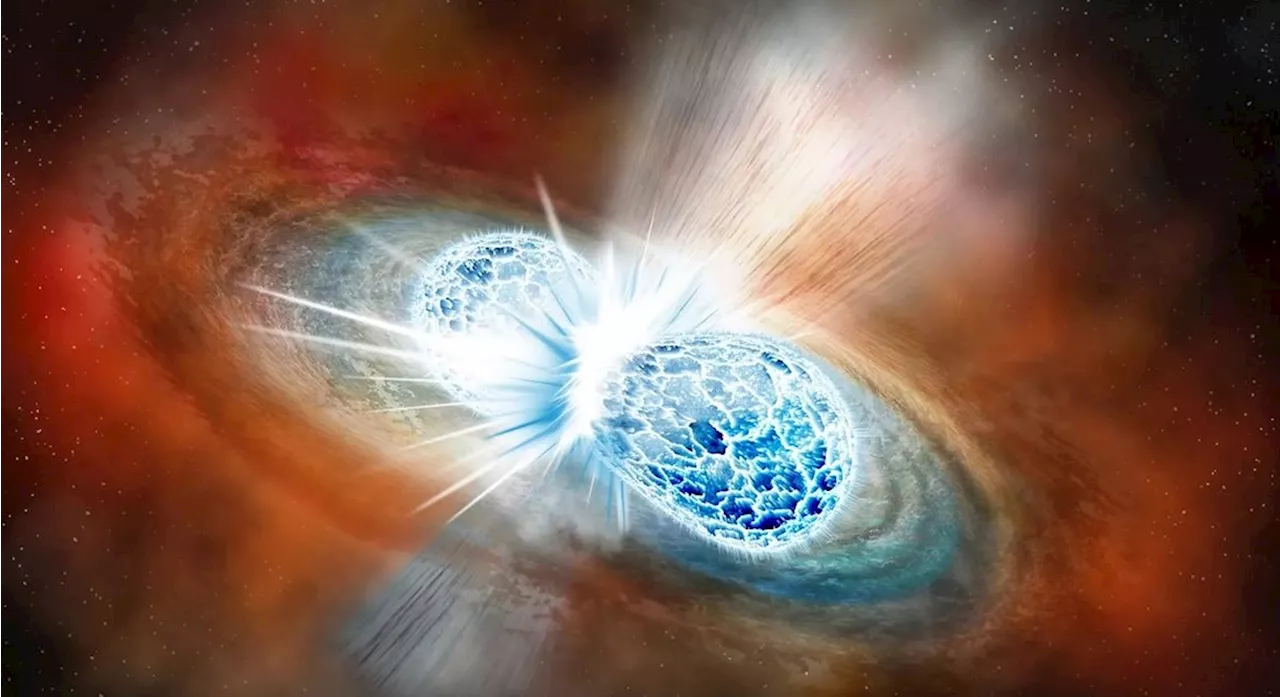These fast-moving outbursts of material are slightly different from those launched by black holes.
The dense remains of massive stars generate powerful jets of gas and dust that move hundreds of millions of miles per hour, according to research published last week in Nature. When some massive stars die, their remains collapse into neutron stars. These remnants are some the densest objects in the universe alongside black holes, and like their more enigmatic cousins, neutron stars sometimes power jets that launch material out into space.
Neutron stars are “so dense that they can pull material off the surface of a nearby companion star,” said James Miller Jones, an astrophysicist at Curtin University in Australia and co-author of the research, in an ICRAR release. “That gas spirals down onto the surface of that neutron star where it gets very, very hot and dense. Once enough of it builds up nuclear fusion reactions start to happen on the surface.
United Kingdom Latest News, United Kingdom Headlines
Similar News:You can also read news stories similar to this one that we have collected from other news sources.
 'Vampire' neutron star blasts are related to jets traveling at near-light speedsRobert Lea is a science journalist in the U.K. whose articles have been published in Physics World, New Scientist, Astronomy Magazine, All About Space, Newsweek and ZME Science. He also writes about science communication for Elsevier and the European Journal of Physics. Rob holds a bachelor of science degree in physics and astronomy from the U.K.
'Vampire' neutron star blasts are related to jets traveling at near-light speedsRobert Lea is a science journalist in the U.K. whose articles have been published in Physics World, New Scientist, Astronomy Magazine, All About Space, Newsweek and ZME Science. He also writes about science communication for Elsevier and the European Journal of Physics. Rob holds a bachelor of science degree in physics and astronomy from the U.K.
Read more »
 Scientists use X-rays to reveal speed of neutron star jetsAstronomers measured neutron star jets, reaching one-third light speed. They utilized X-ray bursts to time the jet launch.
Scientists use X-rays to reveal speed of neutron star jetsAstronomers measured neutron star jets, reaching one-third light speed. They utilized X-ray bursts to time the jet launch.
Read more »
 Neutron Stars are Jetting Material Away at 40% the Speed of LightSpace and astronomy news
Neutron Stars are Jetting Material Away at 40% the Speed of LightSpace and astronomy news
Read more »
 Finding new physics in debris from colliding neutron starsNeutron star mergers are a treasure trove for new physics signals, with implications for determining the true nature of dark matter, according to physicists.
Finding new physics in debris from colliding neutron starsNeutron star mergers are a treasure trove for new physics signals, with implications for determining the true nature of dark matter, according to physicists.
Read more »
 Colliding Neutron Stars are the Ultimate Particle AcceleratorsSpace and astronomy news
Colliding Neutron Stars are the Ultimate Particle AcceleratorsSpace and astronomy news
Read more »
 Colliding neutron stars hint at new physics that could explain dark matterRobert Lea is a science journalist in the U.K. whose articles have been published in Physics World, New Scientist, Astronomy Magazine, All About Space, Newsweek and ZME Science. He also writes about science communication for Elsevier and the European Journal of Physics. Rob holds a bachelor of science degree in physics and astronomy from the U.K.
Colliding neutron stars hint at new physics that could explain dark matterRobert Lea is a science journalist in the U.K. whose articles have been published in Physics World, New Scientist, Astronomy Magazine, All About Space, Newsweek and ZME Science. He also writes about science communication for Elsevier and the European Journal of Physics. Rob holds a bachelor of science degree in physics and astronomy from the U.K.
Read more »
